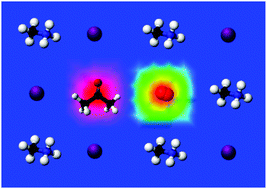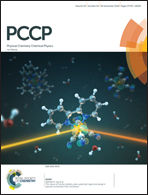Photo-induced dual passivation via Usanovich acid–base on surface defects of methylammonium lead triiodide perovskite†
Abstract
Post-fabrication defect passivation of organometal halide perovskites has become an efficient way to improve their photophysical properties, but the underlying mechanisms are still in debate. In this work, we used p-benzoquinone (p-BQ) to generate surface defects on methylammonium lead triiodide perovskite (MAPbI3), and found that a Usanovich acid–base (O2, acetone or acetonitrile) treatment can effectively passivate those defects and lead to photoluminescence (PL) enhancement. The passivation effect arose from partial neutralization of defect charges via electron transfer between passivation reagents and relevant defects. O2 accepted photo-generated electrons, formed negatively charged oxygen species and attached to the I vacancy site to reduce its PL quenching efficiency by neutralising the defects positive charge. Likewise, acetone accepted photo-generated holes, formed positively charged species and partially neutralised the defects negative charge. The reduced trapping ability of defects caused PL enhancement. In addition, the observed photo-catalysed oxidation of acetone by O2 on the crystal surface supported the single electron transfer mechanism, and showed the potential of MAPbI3 as a photo-catalyst.



 Please wait while we load your content...
Please wait while we load your content...